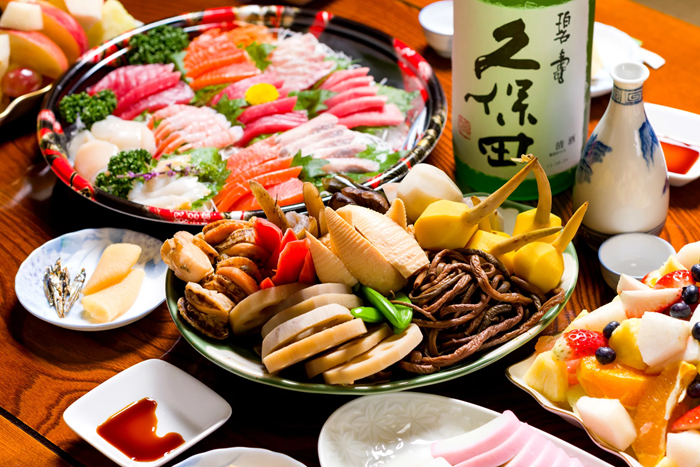Japanese cuisine is distinguished by the fact that products are subjected to minimal heat treatment, which preserves their natural taste.
Kaiseki is a common practice here – each guest is served a dozen dishes, classified by the method of preparation, not by ingredients. Each subsequent dish contrasts in taste with the previous one.
Traditional Japanese products: fish, rice, seaweed, omelette, pickles, fermented soybeans natto, miso. Popular dishes include tempura – fried vegetables or shrimp, yakitori – fried minced chicken with sweet sauce, udon – white noodles in broth with egg and a roll of kamaboko fish paste, ra-men – Chinese-style noodles in meat broth, kare raisu – sweet and mild rice curry with pickled ginger and shallots, pickled bamboo, sprouted beans… Or, for example, shabu-shabu and shaki-yaki – dishes that guests cook at the table themselves in a nabe (pot): marbled beef is boiled or fried mixed with vegetables and noodles. The composition of these dishes is similar, the serving differs: shaki-yaki with sweet rice sauce and egg, shabu-shabu – with sesame and other sauces. The names we already know hide slightly different dishes: sushi is slightly sweetened rice with vinegar, which is usually served with raw fish; sashi-mi is sliced raw fish fillet served without rice, with soy sauce, wasabi, daikon and shiso leaf; naruto is a roll made of fish paste. And also the more familiar nigiri-sushi – thin slices of raw fish on rice with a layer of green radish-wasabi, maki-sushi – rice with pieces of fish and pickles, wrapped in fried seaweed (nori).
Traditional drinks in Japan are green tea and sake. The tea ceremony is a ritual of ultimate enjoyment of tea, imbued with Buddhist ideals. And rice vodka sake is associated with Shintoism: in some holidays it occupies a leading place.

